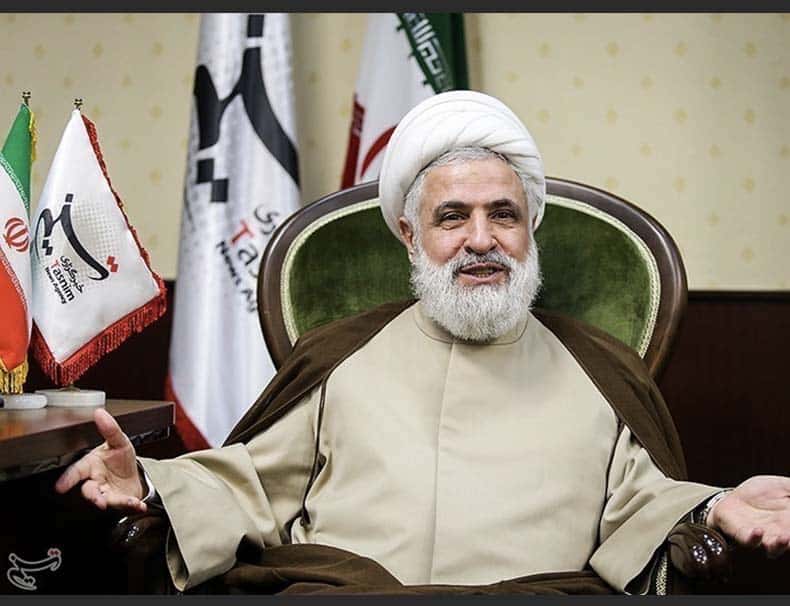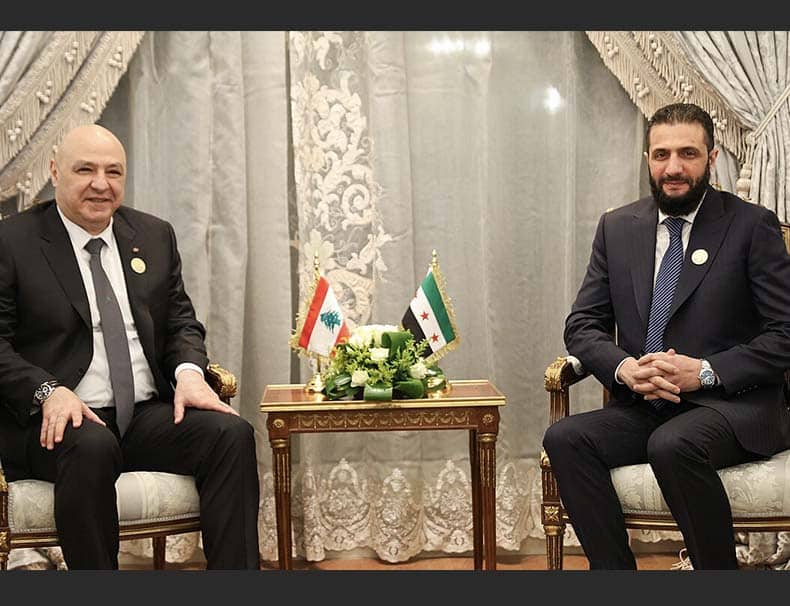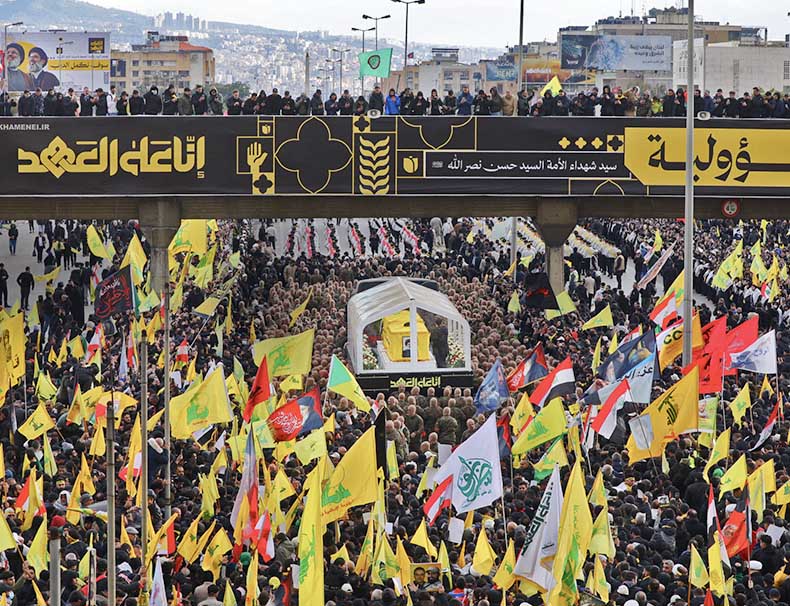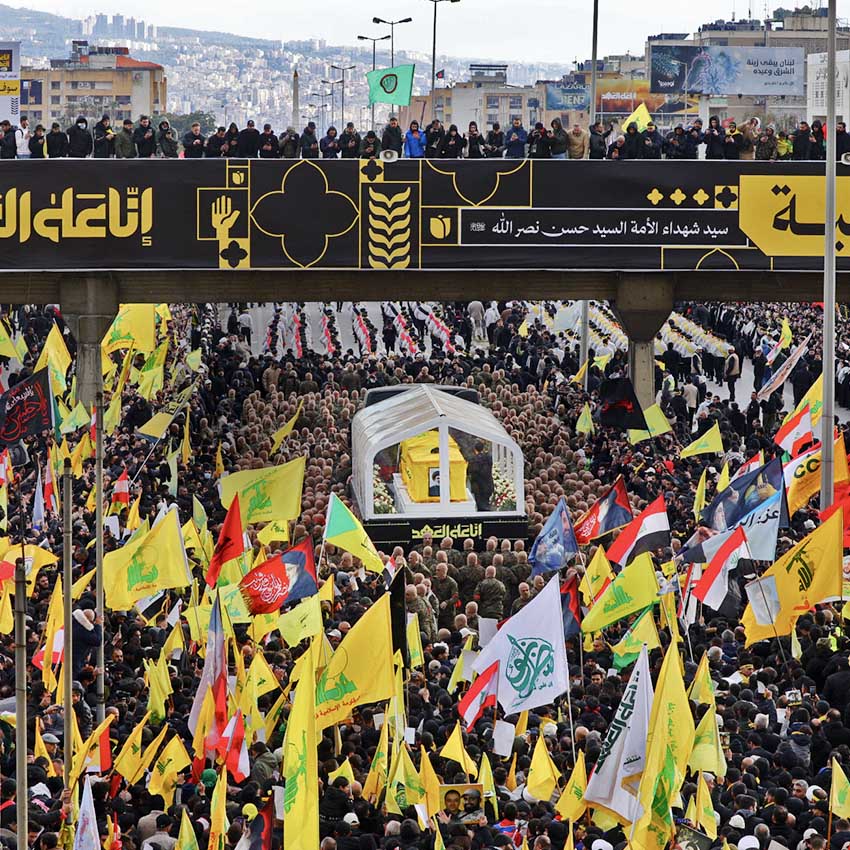The Lebanese government now finds itself closer to civil war than at any time since 1991, after the demand to disarm Hezbollah was met — as expected — with fierce resistance from the organization’s leaders. This demand is part of an official decision made following the inaugural speech of President Joseph Aoun, aiming to limit the amount of weaponry to that held by the government and the Lebanese security forces.
The government has ordered its army to prepare, by the end of the month, a plan to implement the decision, with actual disarmament to be carried out by year’s end. Hezbollah’s Secretary-General, Naim Qassem, clarified the organization’s position, calling the government’s decision a “historic sin” and an attempt to eliminate the “resistance force that protects Lebanon.” According to him, this is an Israeli-American conspiracy, and Hezbollah intends to completely ignore the decision, as it will neither surrender its weapons nor accept any interference in its operations.
This is the first time a sovereign Lebanese decision has been made to disarm Hezbollah since its establishment in the early 1980s. Previous decisions to end the civil war in Lebanon and to disarm all militias (except Hezbollah) were made as part of the Taif Agreement, following Saudi efforts to end the war. Back in September 1989, Lebanese leaders from all sects met in Taif, Saudi Arabia, and put an end to the bloody internal war that erupted in April 1975. The agreement, which was a kind of compromise between Lebanon’s Christians and Muslims, dismantled all militias but left weapons exclusively in the hands of Hezbollah (then called the “Muqawama” — the Resistance) and marked the beginning of the armed struggle against Israel. In hindsight, this ill-fated decision cost the Lebanese many wars, bloodshed, and anarchy, and to this day, the citizens of the Land of the Cedars are paying a heavy price.
Absolute Ideological Loyalty to Iran
Hezbollah (“Party of God”) was established under the nose of the central government during the presidency of Amine Gemayel (1982–1988), and by late 1983, the organization’s military apparatus had taken shape. An Iranian Revolutionary Guards delegation, present in Lebanon since 1982, was engaged in training, guidance, and planning the organization’s operational activity. With Syria’s help — as it then occupied more than two-thirds of Lebanon’s territory — Iran exploited the power vacuum of President Gemayel and his paralyzed government to establish a Shiite Islamic movement as its proxy, funded and directed by Tehran. Naturally, the new movement recognized the authority of Iran’s clerical rule and the religious leadership of Ayatollah Khomeini, leader of the Islamic Revolution.
Since its inception, Hezbollah’s members have waged a murderous and bloody struggle to advance its strategic objectives. Initially, the organization focused on fighting Lebanon’s Christians, then on expelling foreign forces from the country, and later adopted far-reaching goals well beyond the “modest” purpose of its early days. Hezbollah’s ideological foundation rests on a coherent radical Islamic doctrine originating in Tehran, which forms part of Iran’s revolutionary worldview — centered on the destruction of Israel and waging war on the U.S. and the West.
Alongside its hatred of Israel, Hezbollah has demonstrated deep hostility toward the United States — one of the central pillars of the organization’s ideology — stemming from the Iranian worldview that sees the U.S. as the “Great Satan” and Israel as the “Little Satan.” This ideological enmity toward the U.S. was reflected in Hezbollah’s attacks against American targets in 1982, killing hundreds of Americans at military and civilian facilities in Lebanon, and is openly expressed in the statements of the organization’s leaders and its media outlets.

Hegemony Over the Shiite Community
To understand Hezbollah’s activity, we must first analyze Iranian involvement in Lebanon and Tehran’s support for the organization. In fact, before Khomeini’s revolution, Iran had no political, economic, or security interests in Lebanon, and traditionally shaped its policy there as a derivative of its relations with Arab states and the needs of Iranian diplomacy. However, Khomeini’s Islamic Revolution in 1979 brought with it Shiite zeal and the notion of “jihad against the West.” At the height of Khomeini’s revolution, the Iranians sought to expand their reach to the Middle East, partly by influencing the Shiite community.
Hezbollah emerged from the merger of several radical Islamic movements in Lebanon, primarily from a split within the Shiite Amal movement. A large Shiite religious population, deep (and sometimes justified) feelings of discrimination, political anarchy, and direct friction with the enemies of the Iranian revolution in Lebanon — all provided fertile ground for the organization’s establishment. One of the key tasks assigned to the Revolutionary Guards in Lebanon, alongside establishing the Islamic movement, was training fighters through Islamic indoctrination in addition to military instruction for Shiites.
As part of its efforts to gain legitimacy, Hezbollah — in parallel to its military activity — has been engaged in ensuring the welfare of the Shiite community from which it draws encouragement and support. This community is estimated at two million citizens in Lebanon itself, in addition to members abroad. For years, Hezbollah has built for the community food distribution networks — mainly of products imported from Iran — where its fighters receive benefits, as well as television stations (Al-Manar and Al-Mayadeen) and numerous news websites through which it addresses Shiites in particular and Lebanese in general. In addition, Hezbollah’s organizational apparatus, through subsidiary bodies, is responsible for education, welfare, and relief activities, including the establishment and operation of mosques, hospitals, kindergartens, and schools; assistance for the disabled and the sick; economic aid; and other social services, including loans. At present, for example, the organization’s attention and investments are focused on rebuilding apartments and buildings damaged in the recent confrontation with Israel.
Over the years, Hezbollah has established aid committees and public institutions of a Shiite religious nature, built clinics, and inaugurated a new hospital named after Khomeini. Various areas of Beirut have taken on an Iranian Islamic character; in some neighborhoods, for example, the sale of alcohol has been banned. West Beirut, which 40 years ago was a bustling international tourist hub, now resembles an Iranian city in every respect, with building walls adorned with images of Khomeini, Ali Khamenei, Qassem Soleimani, and other clerical leaders, and the prominent presence of Persian speakers only reinforces this identity. The Shiite population, benefiting from Iranian generosity, has developed a sense of identification with the Revolutionary Guards and the values they represent.

“Israel – The Head of the American Snake”
At the time of its establishment, Hezbollah had long-term strategic goals, including the destruction of Israel, the reduction of U.S. power and influence in the world, transforming Lebanon into an Islamic republic similar to Iran, and exporting the Islamic Revolution to the rest of the world. The organization sought to blur and soften its objectives, presenting itself as Lebanon’s defender and framing the conflict with Israel as having religious and territorial roots. On February 16, 1985, the anniversary of the assassination by Israel of Sheikh Ragheb Harb — one of Hezbollah’s senior commanders — the organization published an “Open Letter” in which it officially declared its establishment along with its military arm, the “Islamic Resistance.” This public declaration came after dozens of attacks against Western and Israeli targets.
In the “Open Letter,” addressing Israel and the West, the section titled “Our Main Enemies” stated: “Our people could not tolerate the act of betrayal, and therefore decided to respond against the U.S., Israel, and France. On April 18 and October 29, 1983, it began its war against the Israeli occupation army by destroying its two headquarters, and it intensified resistance activities against it until it forced it to flee for its life. The decision to withdraw in stages is a decision that Israel was compelled to accept for the first time in the Arab-Israeli struggle. We publicly declare that our main enemies are Israel, the U.S., France, and the Phalangists. Hezbollah’s platform defined its practical goals, as an Islamic movement, as the expulsion of the foreign forces that invaded Lebanon in the early 1980s, to focus on changing the political and social order within it.”
On “Our Goals in Lebanon,” it was written that the organization set for itself the following: “The final removal of Israel from Lebanon as a prelude to its ultimate elimination and the liberation of holy Jerusalem from occupation; the complete removal of the U.S., France, and their allies from Lebanon and the termination of the powers’ influence in Lebanon through Hezbollah; bringing the Phalangists to a fair trial for the crimes they committed against Muslims and Christians with the encouragement of the U.S. and Israel; granting the Lebanese people the freedom to decide their fate and to choose the government under which they wish to live freely. We stress that we do not conceal our commitment to Islamic rule; we call on everyone to choose Islamic rule, which alone guarantees justice and honor and will prevent any attempt at renewed imperialist penetration into Lebanon.”
To further reinforce and emphasize Hezbollah’s objectives, it was written that Israel must disappear — literally: “Israel is the head of the American snake, which threatens our Islamic world. It is a hostile entity. It must be fought so that there will be justice. This enemy threatens us, our future, and the fate of our nation, mainly because it has a plan to expand. It began implementing it in Palestine, and now it seeks to establish Greater Israel from the Euphrates to the Nile. Our struggle against criminal Israel is historic because the Zionist entity was established on occupied land at the expense of Muslims.
“We condemn any attempts at mediation between us and Israel, and we define the mediators as the enemy’s side because their mediation serves only Israel and the Zionist entity. In this regard, we oppose the Reagan Initiative (the U.S. President — E.C.) and any initiative that includes recognition of Israel. We condemn the recent calls by Jewish settlers to settle in southern Lebanon. Likewise, we condemn the arrival of Ethiopian Jews into occupied Palestine. We see this as part of the Israeli idea of expanding at the expense of the Islamic world.”
They Haven’t Said the Last Word
Today, Hezbollah is focused solely on survival, having failed to defeat Israel as Hassan Nasrallah boasted dozens of times in his empty threats. Most Lebanese were disappointed by Nasrallah’s decision to launch a war in support of Gaza after the October 7 massacre, and even more so when he lost that campaign. Hezbollah no longer seeks to change Lebanon’s government into an Islamic regime, nor does it seek to fight the Phalangists as it did during the civil war. The organization has also failed to liberate Palestine and the Al-Aqsa Mosque; Nasrallah will not be praying in Jerusalem as he once boasted, and its ambitions to fight the U.S. and France have faded.
In the past two years, Hezbollah has suffered a series of successive blows — the elimination of tens of thousands of its fighters, the killing of Nasrallah (one of the most prominent and influential figures in the Middle East), severe economic damage, the downfall of pro-Iranian Assad’s regime, the halt in weapons and intelligence flows from Iranian advisers, and now the Lebanese demand to disarm it. The decline in its status and influence is evident in the fact that while Nasrallah once described the disarmament of Hezbollah as treason and an unthinkable act, today all of Lebanon’s influencers and journalists speak freely about this unprecedented decision.
Not a single one of the goals Hezbollah set for itself in the mid-1980s, when it announced its founding, has ultimately been achieved. It is gradually losing legitimacy among Sunni and Christian communities and even among some Shiites, due to the dire economic situation, corruption within the organization, and above all, the wars it dragged Lebanon into against Israel, which led to the destruction of half of southern Lebanon and entire areas within the capital, Beirut.
Nevertheless, despite focusing mainly on survival, Hezbollah still retains its weapons. It remains a major political player in Lebanon, with representation in parliament and government through the “Resistance Bloc” and alliances with the Shiite Amal movement, maintaining a broad base of support within the Shiite public.
The Lebanese demand to disarm Hezbollah poses a direct threat to one of its key pillars of power — the “Resistance Arm” — thus placing it in direct conflict with the government and the army. Only Iran has publicly declared its support for Hezbollah. At the same time, Gulf states, especially Saudi Arabia, have conditioned any aid to Lebanon — including allowing millions of Gulf tourists to visit the country and invest in it — on Hezbollah’s disarmament. In the West, the U.S. continues to lead a hard line against Hezbollah, while other countries, like France, have limited themselves to statements of support for the decision.
Even within Lebanon, Hezbollah is being cornered. Its political rivals are exploiting international and American pressure to try to curb its power, especially after the ceasefire with Israel and the fact that it allowed Israel to capture parts of southern Lebanon. According to its opponents, Hezbollah has lost all justification for its existence after years of boasting that it was Lebanon’s protector. In reality, in the view of many in the public, it turned the country into Iran’s battlefield against Israel.
Hezbollah, for its part, has begun exerting pressure on the ground and staging shows of force. In recent days, hundreds of motorcyclists affiliated with the organization have roamed Beirut, protesting the government’s decision, expressing support for Hezbollah, and singing praises to Nasrallah. In Lebanese media, figures known to support the organization are reciting talking points about Israeli aggression and claiming that Hezbollah’s weapons protect the Shiite community and will therefore not be surrendered. There are also messages asserting that the guns are intended for use against Syrians who might attack the Shiites, due to the hostility that began when Hezbollah supported Assad and fought the rebels a few years ago.
Even if no one in Lebanon wants to return to the days of the civil war, it is clear that the various factions could easily slide into an escalating chain of events that would ultimately lead to deadly clashes and anarchy — either between the Lebanese army and Hezbollah, or between Hezbollah and Christian factions. Such a scenario is not only realistic but expected, given the organization’s stubbornness and Iran’s backing. If Hezbollah persists in its stance, it could drag Lebanon into yet another war — this time, once again, with itself.







